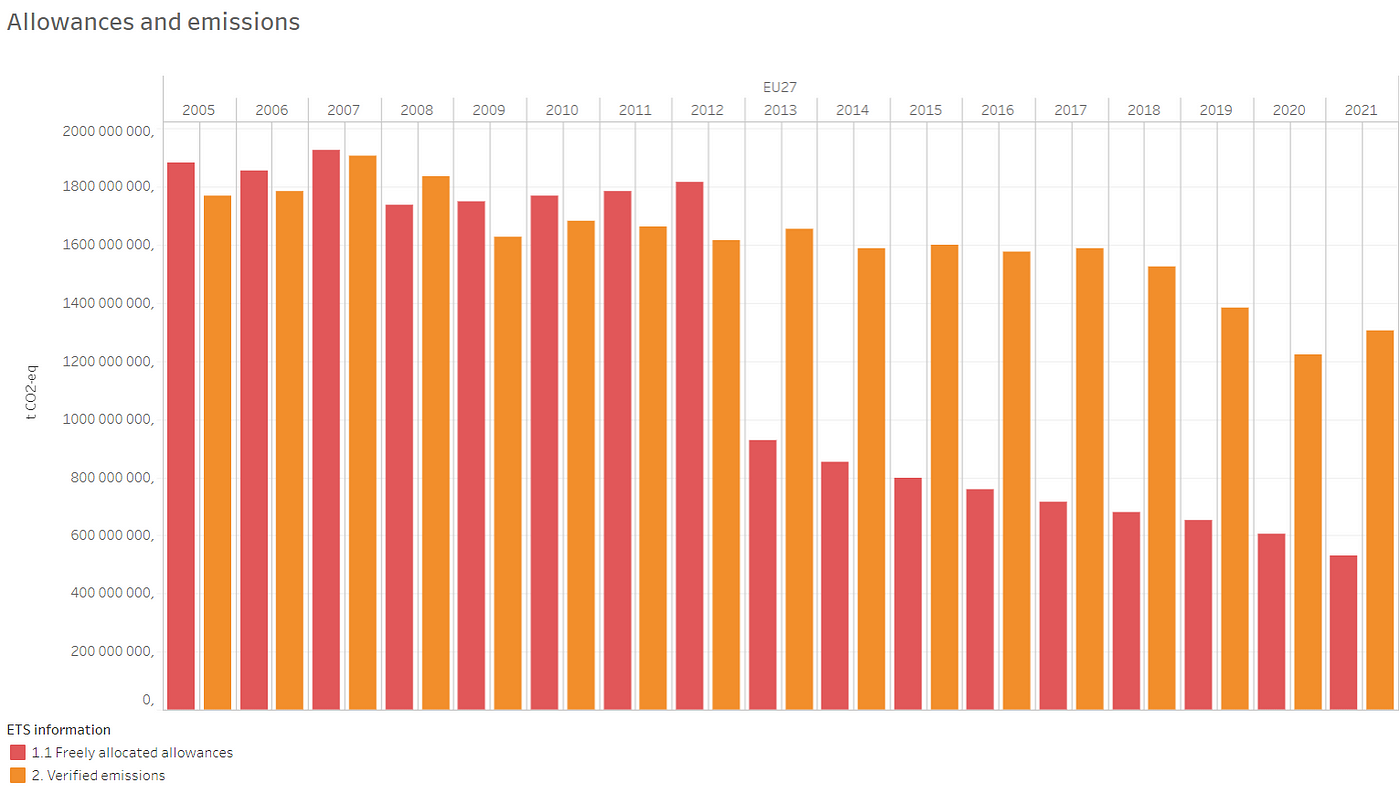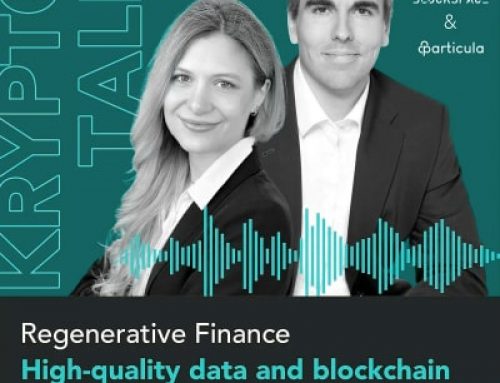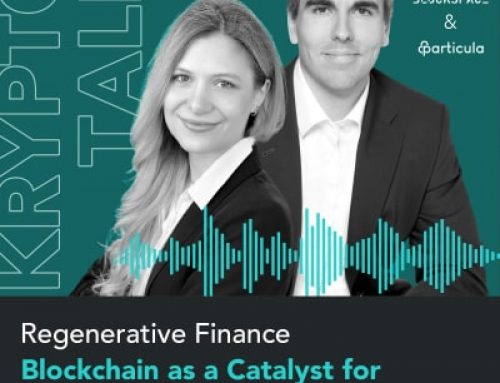
A
Abstract
An increasing number of project developers and certifiers in the voluntary carbon market are dedicated to mapping certificates as tokens on the blockchain. At the same time, there are efforts to integrate new technologies to provide alternative data sources. This is creating a new market segment in which enormous amounts of information from various data sources are to be mapped transparently. However, the enrichment with data and the increase of providers in the market also poses some new challenges. Companies will need a trusted, independent data provider to gain competitive advantage, when these two highly complex, potentially very lucrative and still largely unregulated markets collide.
A
Introduction
The EU Emissions Trading System (EU ETS) was introduced in 2005 to implement the Kyoto international climate protection agreement. It serves as a central instrument of the European Union to reduce greenhouse gas emissions in a sustainable and economically favorable manner. Members are the 27 EU member states, Norway, Iceland, Lichtenstein, and later the UK. The Swiss emissions trading system has also been linked since 2020.
The EU ETS covers emissions from around 11,000 plants across Europe in the energy sector and energy-intensive industries, which together account for around 40% of greenhouse gas emissions in Europe and also includes intra-European aviation.
This market system operates according to the so-called “cap & trade” principle. A cap determines how many greenhouse gas emissions may be emitted in total. The member states issue a corresponding amount of emission allowances to the plants — partly free of charge, partly via auctions. One allowance permits the emission of one ton of carbon dioxide equivalent. The emission allowances can be freely traded on the market. This creates a price for the emission of greenhouse gases. This price creates incentives for the companies involved to reduce their greenhouse gas emissions.

A
In conjunction, a voluntary market was created to allow private individuals and companies, not covered by the compliance controlled markets, to meet their net-zero targets through offsets. Unlike allowances, which are issued by governments, offsets are project-based. A distinction is made between avoidance and carbon removal projects.
Avoidance projects are the carbon projects aiming to avoid the release in the atmosphere of further greenhouse gas (GHG) emissions. These include renewable energy projects, industrial pollutants projects and the famous REDD+, or reducing emissions from deforestation and forest degradation.
Carbon removal projects capture carbon using technologies such as carbon storage, which literally siphons carbon out of the atmosphere, or the far more controversial natural sequestration projects. As the name implies, nature-based solutions rely on organisms (such as algae) or naturally-occurring phenomena (such as chemical mineralisation) to draw carbon out of the atmosphere. Technology-based solutions in turn rely on human-developed mechanical, chemical or other engineered forms of removal to process the ambient air around us and remove present CO2.
The Demand for carbon credits is expected to increase dramatically in the coming decades due to the growing number of net-zero corporate commitments. 698 of the 2,000 largest publicly traded companies have made net-zero commitments to be achieved in 2050 or earlier. At the moment these voluntary markets are at around 5% of the worldwide compliance controlled markets and have a market size of around €12.5bn. By 2025 they will reach a market volume of approximately 50.0 bn.
Representation of CO2-Allowances on Blockchains
Since its introduction, CO2-allowance trading has suffered many losses in terms of trust due to fraud, such as VAT tax fraud, recycling of allowances and theft through phishing attacks. At the EU level, countermeasures are being taken with registration obligations and serial numbers. A centralized Union registry and a special mechanism will also ensure that certificates, once used, cannot be reused.
However, there is sometimes no EU-level oversight of the emissions market. Insufficient regulation and comptability of registry systems, as well as differences in data collection, make the EU ETS a vulnerable target for tax fraud and theft. The most prominent weaknesses include: insufficient account security, the ability for almost anyone to open an account, the near-instantaneous transfer of allowances on the spot market, the lack of harmonized standards for dealing with stolen allowances, and sanctioning options or uniform penalty amounts.
This is where blockchain can come into play. When a allowance is issued via blockchain-based models, the data is digitized and assigned to a digital identity in each case. All allowances are marked and are traceable. Originals are stored securely on the network of computers in the blockchain. In this way, blockchain enables transparent data exchange and ensures that allowances are recorded in an immutable and tamper-proof audit trail, creating a resilient proof of authenticity. Through measurable transactions and standardized, readily available data, a trusted, traceable and secure link would be established between all participants in a supply chain of CO2-allowances, which in turn could protect against transnational multiple sales and fraud.
In the past, the enormous power consumption of the blockchain was criticized in this context. This would contradict the climate protection idea of emissions trading. However, the criticism of energy consumption does not apply to the blockchain platforms Corda or Fabric, which are most commonly used for private enterprise applications, or public blockchains such as Ethereum. These are low energy compared to the Bitcoin Blockchain. This is mainly due to the different way these protocols validate transactions. In the case of Corda, Fabric and Ethereum through the so-called consensus method by digital signatures, as opposed to mining in Bitcoin.
Representation of CO2-Certificates on Blockchains
For the reasons mentioned above, an increasing number of project developers and certifiers in the voluntary market are also dedicating themselves to mapping CO2-certificates as tokens on the blockchain.
At the same time, efforts are being made to integrate new technologies such as big data, natural language processing, internet of things, satellite imagery and robo-advisors to open up alternative sources of data. Therefore, a new market segment is emerging in which enormous amounts of information from various data sources are to be mapped in a transparent manner.
In addition to tokenization providers such as Toucan Protocol, Flowcarbon, Sustaim, GoodCarbon or CarbonFuture, providers such as Senken are dedicated to building entire market structures for tokenized CO2-certificates.

A
Data Quality and Data Analysis are Key
However, the enrichment with data and the increase of providers in the market also offers some new challenges and the risk of transferring the fractionalization, lack of standardization and intransparency of classic certificate trading into this new market segment.
Providing additional data alone does not in itself improve the quality of the analyses. Moreover, additional data makes it difficult to compare projects unless consistent methodologies are used for data collection and aggregation. Furthermore, the problems of classic CO2-certificate trading, such as inconstant pricing mechanisms, incorrect incentive systems of the rating agencies and mostly missing audits by independent third parties, will not be solved with more available data.
For companies, the increase in available data and providers thus means further research effort to identify suitable projects. The risk of greenwashing increases.
In addition, new risks arise when two worlds collide, each of which is highly complex, potentially highly lucrative, and as yet largely unregulated.
Two crypto platforms in particular, Toucan and ClimateDAO, recently drew criticism from climate activists, who accused them of exacerbating the problems of carbon markets rather than solving them. Specifically, they argue that both artificially increase demand for low-quality carbon credits and, through the issuance of their tokens, elevate carbon credits to the status of speculative assets for private investors.
Building a One-Stop-Solution with the Blockchain Founders Group
However, compared to classic market, there is a possibility to bring transparency into the market segment for tokenized CO2 certificates.
The number of providers is currently still manageable and the development of a database that allows projects to be compared on the basis of defined standards and key figures is still possible. With additional services, such as the forwarding to the respective project pages, the preparation of reports and analyses for accounting and tax reports, a real added value can be created for investors and companies.
Compared to the traditional market, investors and companies then do not have to choose multiple providers and rely on a combination of standard ESG data providers, specialized providers, fintech companies and consultants. This can provide a significant competitive advantage, lead to a degression of research expenses, and exponentially reduce the risk of greenwashing.
In collaboration with the Blockchain Founders Group AG, industry experts, rating agencies, standard setters, tokenization providers and CO2-token marketplaces, we have made it our mission to build such a database.
Within this context, BFG provides mentoring, funding and support for next generation business models related to Web3.



